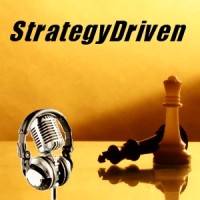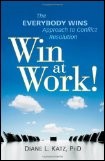Workplace Mediations and Why They Can Benefit Your Business
Conflict and misunderstandings are natural parts of life, as these drive us to be better and to get to know ourselves and our peers. At the workplace, conflict and misunderstandings are discouraged as they can disrupt operations. When these happen and get resolved, however, these can result to much stronger and stable workplaces. Part of what ensures conflicts, disputes, and misunderstandings get resolved properly are mediators who specialize in workplace mediation. If you haven’t experienced this before, you might wonder – just what are workplace mediations and why they can benefit your business?
The Cost Of Conflict In Your Business

According to the same study, 85-percent of employees have to deal with conflict to some extent, with 29-percent of employees consider themselves dealing with it “constantly.” Employees and employers said 49-percent of conflict in the workplace is normally due to “warring egos,” with 34-percent as a result of stress of the office, and with 33-percent being caused by immense workload.
What’s perhaps more distressing is the reality that 25-percent of employees said these conflicts have had them see absences and sickness, with 9-percent actually seeing entire projects fail because of workplace conflict.
These can be alarming statistics if left under-controlled, and especially if it happens to your workplace. Meditation may actually be able to help address these concerns by providing an avenue for conflict to be resolved and managed properly.
Achieving Workplace Harmony: Mediation Works

- Get a qualified neutral party to aid and tackle the issue: Oftentimes there are mechanisms existing in the workplace that aren’t well-defined enough, or can’t be reinforced properly by members of the human resources department because they aren’t trained or might be too involved in the issue. Workplace mediators exist to provide a qualified neutral party to not just review HR policies in place to help resolve the conflict, but to even find much better ways to provide a solution to the workplace problem.
- Maintain objectivity while tackling the problem: Workplace mediation is a good way to ensure objectivity still exists while discussing workplace conflict, especially with the parties involved. When mediators are involved in the process of mediation, they are oftentimes in the best position to look at things from an outsider’s point of view, as they won’t need to take sides in the issue. They can see past the unreasonableness of the conflict and find opportunities to provide common ground to the parties involved in the conflict.
- Provide processes and mechanisms to reduce conflict and promote understanding: Workplace mediation is built in such a way that it can help conflicting parties not just find understanding amongst themselves, but also to reduce overall conflict. Being able to talk about their woes and exploring alternate perspectives allow themselves to not just understand themselves and others but also to find opportunities to avoid getting into these types of conflicts again in the first place.
- Restore workplace relationships to proper order: When two (2) or more coworkers are in the middle of conflict, workplace relationships are definitely going to be strained. The physiological and emotional stress workplace conflicts bring can not only affect workplace performance but also the way the people involved see themselves and others. Workplace mediation can work on ways to restore these relationships to proper order – and as such can promote better functioning, order, and morale in the workplace.
- Give a much better platform to comply with management directives: Unlike other forms of conflict resolution, workplace mediation reinforces compliance much better because parties involved will be able to form mutual agreements of understand that all parties agree to. This means agreements mediators help with won’t be about “doing this, not doing that” but rather discuss things both parties “agree to.” Compliance can be expected with much better accuracy if it’s been created by both parties.
- Get you to work without worrying about impact on the front-end: Conflict in the workplace is perhaps the kind of conflict that affects people the most because not only is it involving two (2) parties inside the workplace, but also the customers. When two (2) coworkers don’t resolve their conflict properly, the customer gets to pay in the bottom line. This can be in the form of delayed service, poor product, or even poor quality of service. Workplace mediation allows your conflicting coworkers to be able to not only understand the nature of the conflict and find some resolution for it, but for them to be able to work together properly without consequences.
- Resolve conflict in a much less expensive manner: A lot of times, people look to litigation as a means to resolve workplace conflict – however, it’s a much expensive and oftentimes too “final” approach to something that can be resolved in a much peaceful manner. Involving attorneys will most likely already cost the company around $300 for every hour – but mediators can just as well resolve the issue without making it feel as though people are picking sides. Mediation looks beyond questions like who’s right and wrong, or who wins and losses. Rather, workplace mediation looks for efficient ways to solve problems and at the same time improve the relationships of those involved.
The Takeaway: Meditations And Maintaining Workplace Harmony
When you hear the word “mediation,” you’ll most likely think of “fights” and “conflicts.” This is especially because mediators are perhaps most involved when they have to settle disputes and fights between parties of their clients. However, as with the above, workplace mediation functions more than just to “settle” fights and conflicts. In fact, workplace mediation is integral in order to make sure there’s always a means to provide a healthy and proper platform for discussion, especially of contentious topics such as workplace policies and rulings. Having a workplace mediation system in place, and conducting regular workplace mediations, can pave rise to a healthier and much more productive workplace.

 Laura MacLeod created
Laura MacLeod created  StrategyDriven Podcasts focus on the tools and techniques executives and managers can use to improve their organization’s alignment and accountability to ultimately achieve superior results. These podcasts elaborate on the best practice and warning flag articles on the StrategyDriven website.
StrategyDriven Podcasts focus on the tools and techniques executives and managers can use to improve their organization’s alignment and accountability to ultimately achieve superior results. These podcasts elaborate on the best practice and warning flag articles on the StrategyDriven website.
 Diane Katz is author of
Diane Katz is author of